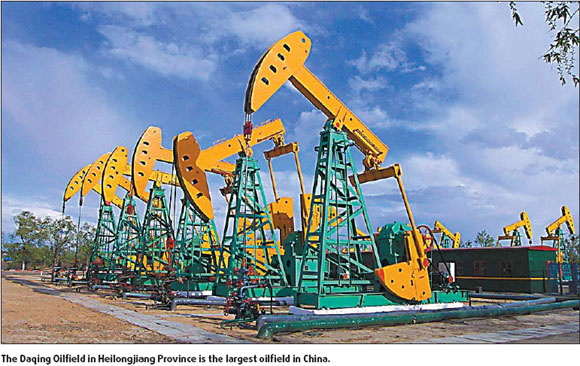Special Supplement: Heilongjiang, a land of business opportunities
After more than half a century of development, great opportunities exist in Northeast China's Heilongjiang Province, with its unique competitive advantages and enormous potential.
Heilongjiang lies in the center of Northeast Asia. It is named after the Heilong River, the longest boundary river between China and Russia.

Heilongjiang Province covers 454,000 square kilometers with a population of nearly 40 million. The province is the "cradle" of new China's industrial economy.
It is home to a batch of large-sized State-owned enterprises, including Daqing Oilfield, China No 1 Heavy-duty Machinery Group, Harbin Aviation Industry (Group) Ltd, and Harbin Power Equipment Corporation.
Since the founding of new China in 1949, Heilongjiang has made a huge contribution to the country's development by supplying one half of its crude oil, one-eighth of its timber, one third of power station equipment sets, one tenth of its coal, one half of railway carriages and one seventh of commodity grain.
With the development opportunity brought by the central government's decision to revitalize old industry bases in Northeast China, Heilongjiang has its unique advantages and great potential for further growth.
Natural resources
Heilongjiang has rich natural resources. Presently, 110 varieties of mineral resources have been found there, with the reserves of some minerals taking the lead in China. For example, exploitable reserves of crude oil account for about half in China; the proven coal reserves are 22.7 billion tons; forest reserves are 1.37 billion cubic meters, ranking first in China.
Heilongjiang's power supply is stable and the price of electricity is low at about half of what it costs the southern provinces.
Heilongjiang has nearly 3,000 kinds of wild animals and plants, and the annual output of medicinal herbs is roughly 2 million tons.
Farmland area is 11.3 million hectares, ranking first in China.
Heilongjiang is made up of farmlands, forests, grasslands and wetlands. Heilongjiang has a strong agricultural industry, with green food production leading the country.
Located at one of the three major black soil zones in the world, Heilongjiang has fertile soil, flat land, sufficient water resources and large areas of farmland.
The province is an important grain production base in China, including yields of soybeans with high oil content as well as high-quality rice.
Heilongjiang is also a leading producer of green food products, including meat, eggs, poultry and milk.
R&D strength
Heilongjiang also has strong technical research and development (R&D) and education industries.
The province is home to 55 universities and institutes, including the prestigious Harbin Institute of Technology, over 900 research institutes and R&D facilities.
The province also has a great number of engineers, experienced technicians and research personnel, providing a strong human resource base for the province's economic development.
Heilongjiang has clear geographical advantages, as it is located in the center of Northeast Asia, at the starting point of the Eurasia Continental Bridge, and adjacent to Russia, Japan, the Republic of Korea and the Democratic People's Republic of Korea
The province shares a 3,000-kilometer border with Russia, having 25 first-grade State-level ports and nine Sino-Russian border trade zones along the borderlines.
Because of such geographic advantages, the province is an ideal passage and bridgehead for the Chinese mainland, China's Hong Kong and Macao special administrative regions, as well as Southeast Asia to engage in transnational trade with Russia and even Europe.
Policy support
Heilongjiang Province has powerful policy support and excellent business environment for economic development.
The Chinese government has begun a trial on a new policy for value-added tax in Northeast China including Heilongjiang, and new policies including direct subsidy for production of grain and subsidy for excellent seed are also being implemented.
In the area of financial policy, commercial banks are allowed to dispose of non-performing loans, and reduce and exempt off-balance-sheet debt interest by themselves.
Meanwhile, Heilongjiang Province has also promulgated many preferential policies, such as properly reducing and exempting land use expense for foreign investors, and providing subsidies for foreign-invested enterprises in using water, electricity and gas.
In order to further optimize the investment environment, the provincial government and local governments of 13 cities and prefectures have all established investment service centers, which provide one-stop service to investors.
In order to grasp the development opportunities, Heilongjiang Province has launched "the General Program on Revitalizing Heilongjiang Old Industry Base."
The program aims to strengthen the independent development capabilities of its industries, and develop six pillar industries including equipment manufacturing, petroleum, petrochemicals, energy, food processing, pharmaceuticals and forestry product processing.
(China Daily 09/05/2007 page11)














